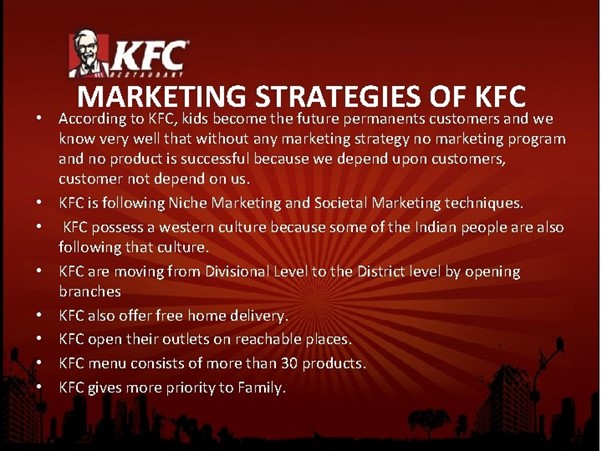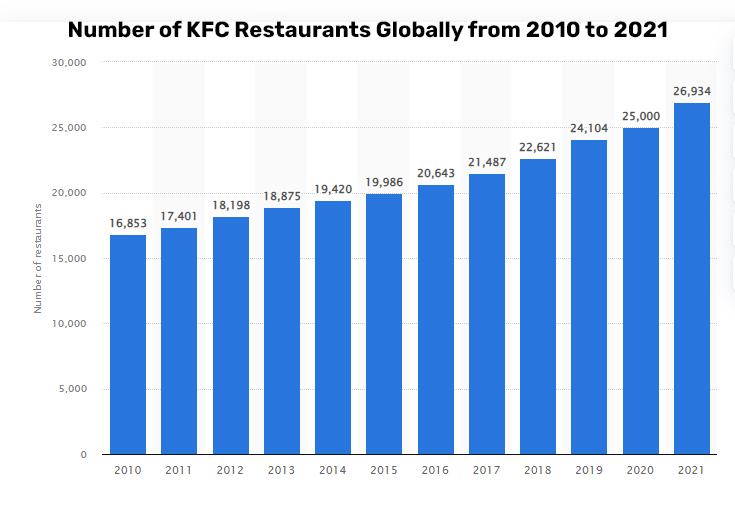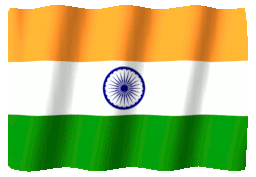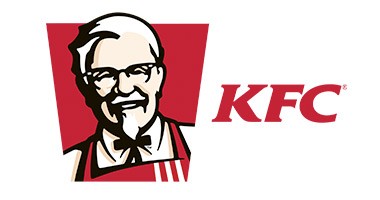KFC’s Marketing Strategy – Actions that Led to KFC’s Success
KFC (Kentucky Fried Chicken) – A household name is one of the biggest fast-food chains in the world. Who wouldn’t want to devour the spicy crispy fries with world-class juicy sandwiches? Of course, we all would love to! KFC, headquartered in Louisville, Kentucky, is the second-largest food chain after McDonald’s. Founded in 1952, it has been more than 70 years since its inception. The best part is that fried chicken still caters to customers’ taste buds. Today’s blog will share a comprehensive analysis of KFC’s global marketing strategy.

Segmentation, Positioning & Targeting of KFC’s Marketing Strategy
KFC uses demographic segmentation to serve the market according to customer requirements. The majority of consumers are young and young adults. They used to serve similar menus globally. Therefore, they were using an undifferentiated targeting strategy. However, recently, KFC started to customise and localize the menu. This gave them higher acceptability amongst the target audience. Also, they changed their positioning strategy from a product-based strategy to a much more value-based strategy.
KFC is strongly positioned amongst consumers for the chicken menu. This is because few outlets offer vegetarian. However, when it comes to something non-veg, KFC is nothing short of fantastic. The chicken wings and chicken bucket is favorite amongst everyone. This targeting technique is the main reason why most non-vegetarian lovers love KFC. Let us share the details on the 4P’s of KFC’s marketing strategy.
Product Strategy of KFC
The product strategy is a brief outline of the products that a firm needs to sell its customers. For example, KFC is popular for its world-class chicken burgers and fries. However, the list doesn’t end here. KFC’s international marketing strategy keeps on introducing new items within the menu. Thus, it helps build a strong product strategy and supports marketing.
Some of the best products of KFC include:
- Rice bowls
- Chicken/Veg zinger burgers
- Fiery chicken wings
- Veg strips
- Boneless chicken wings
- Veg longer
- French fries
Promotion Strategy for KFC
The promotion strategy is connected to the ways in which the products of a firm can be promoted in the market. For example, KFC promotes itself vigorously as the world’s second-largest fast-food giant. The promotion occurs through television ads, magazines, newspapers, and commercial hoardings. KFC has also sponsored the Big Bash League in Australia and many cricket games. Another critical aspect of KFC’s digital marketing strategy is the slogan “It’s Finger-Lickin”, good that reminds its audience about lip-smacking food products and delicacies.
Pricing Strategy of KFC
The pricing strategy established by the firms sets up the prices of their products to garner the audience’s attention effectively. KFC utilises a discriminatory pricing policy for all products. The products have different pricing and ratings. The food items sold in India are highly affordable. KFC promotes itself through multiple mediums like TV, social media, News Papers, and more. However, it is still lagging on sponsoring huge events.
The products sold in different countries have different pricing. Therefore, KFC used price skimming and market penetration technique. This means that when their competitors entered the market, KFC reduced the price a lot, and while introducing new products, KFC kept the prices to a minimum compared to the later stages. This helps them in getting the desired attention.
Placement Strategy of KFC
The placement strategy relates to tracking the places where a firm can contact potential buyers for the products. But unfortunately, when it comes to KFC’s market development strategy, KFC’s marketing team is extremely conventional to chalk out the grounds of their restaurants.
With its audience-winning strategies, KFC has become a big giant today. It has got more than 15000 outlets in 100 different countries. All the outlets of KFC are strategically opened in different areas where colleges, schools and offices are there. The reason is, that the youth is much more indulgent in fast-food products than the aged population of the country.
Distribution Strategy of KFC
With more than 18000 restaurants offering finger-licking fast food worldwide, KFC’s story and market strategy evolved a lot. The strong tie-ups and collaboration with supply chain partners have helped them serve the customers much better. KFC always keeps its outlets in premium areas like malls and shopping places. Also, the KFC outlets carry out delivery for online orders. Thus, KFC covers both offline and online deliveries.
Competitor Analysis in Marketing Strategy of KFC
KFC faces strong competition from Kokoriko, McDonald’s, Kyochan, and other local/national food companies. There are also local fast-food joints that offer head-on competition to KFC in developing nations. In developed nations, different fast-food companies like Subway eat up their market share.
Two of the primary competitors of KFC are McDonald’s and Subway. Both of them are in the category of burgers and sandwiches. McDonald’s specializes in the burger category while Subway specializes in sandwiches. However, subway has still not reached its distribution potential while McDonald’s and KFC are consistently at loggerheads with the global presence.
Brand Equity of KFC’s Global Marketing Strategy
At present, KFC is presently ranked 147 in the global ranking table. With sustainable positive brand positioning, the company was capable to create top of the mind awareness (TOMA). Moreover, KFC’s global marketing strategy is catering to the left-out segment that helped its brand building by introducing the veg menu and localisation strategy. Another crucial factor that strongly helped KFC is the continuous branding initiatives along with above-the-line and “below-the-line” marketing strategies.
Market Analysis in the KFC Global Marketing Strategy
More than 50% of the sales of KFC come from developed nations. However, the markets have a stagnant growth rate. On the other hand, developing nations like India have a very high potential for KFC. The market is still growing, but fast-food chains have a lesser acceptance rate in the developed market. Developed nations are becoming more health-conscious. Thus, only developing nation will share the market dynamics.
Quality and A Myriad of Products
The products of KFC go through a series of quality checks. This is a part of KFC’s global marketing strategy. The quality checks help retain their customers and the company’s goodwill. KFC sells a wide array of chicken preparation and ensures the best quality control. The quality check starts right from the beginning when they choose the raw materials in the manufacturing factories, the nutritional factors, cleanliness, and the process of making. Even the delivery to the outlets is checked consistently.
Online Presence and KFC Promotion
With the use of smartphones, new technology, and the internet, people’s online lives have become faster and easier. KFC also offers excellent direct online delivery, not just in collaboration with the delivery partners like Zomato & Swiggy. When it comes to KFC’s marketing strategy and promotions, who can forget the “Design Your Own Bucket” campaign by KFC.
The campaign participants had to come up with colorful and creative KFC buckets. The promotion got 5500 entries. And not just that, they also leveraged the occasion when cricket legend Sachin retired. They conducted bucket entries with the picture of Sachin when he retired.
Then there was the Currycature campaign by KFC’s promotion strategy, where the participants chose either a male or a female character with a wacky yet Indian touch and upload their pictures. The Wow Menu Option campaign was also on a 500/- rupee note. The KFC app allowed users to scan currency notes of Rs. 500 which would allow the users to buy various food within this budget.
The result of all these campaigns was KFC got featured in the top 5 socially devoted brands, the engagement became 3X times the industry average and it got placed in the top 5 fastest growing social media brands in the country.

How KFC Used Social Media to Turn Their Haters of It’s Fries into Fans
Did you know? With a budget of just £230,000, KFC used social media, print, and outdoor promotions to transform its haters of fries into fans. At KFC, the fries were the most complained about the product. It is a problem with every menu. 1/3rd of the complaints was about the chips. The chips were described as “bland” or “soggy”. This had a major impact on the brand image of KFC, especially because people showed high discontent on Twitter.
The Initial KFC Action
When they realised the problem, the fast-food chain changed the chips recipe in Ireland and the UK. It changed to a “tastier & chunkier fry”. The new chip was scoring great in research, but it also underperformed in real-life tests. This was because people had gotten used to the old chips and many loyal customers wanted to stick to the older version.
KFC’s global marketing strategy needed to shift its perception among the new and lighter users to grow the brand. This means it could not rely on the existing customers who accepted the old chips and fries. They had to change the fries. The main challenge was to manage the overall transition process to the new recipe of chips. This had to happen in such a way that the loyal fans who didn’t want the change didn’t feel that they were losing out.
The Next Step
KFC created messaging that talked about how the new fries were better than the old. However, the feedback from the test was that it wasn’t working well. Thus, KFC’s global marketing strategy took a new approach. They used behavioral economics. They realized that it had a loss aversion problem. People didn’t just dislike the new fries, but they were afraid of losing the old ones. Thus, highlighting the features of the new fries would not be enough.
Instead, KFC needed to acknowledge the problems with the old fries so that the new fries are seen as their “savior”. So, they launched the campaign “Ain’t No Small Fry” on Twitter. This was also backed up with the traditional media, where KFC paid to amplify the criticism of the old chips to the existing fans and also those who had tried to criticize the new chips. This was followed up with ads on the new chips.
The Results
There was a risk to this approach, but it paid off. Suddenly KFC’s new fries were at the top of the news. It also became the most-read story on the BBC. All of these were just on a budget of £230,000. The initial Twitter campaign had 3 million impressions. Overall, KFC’s marketing strategy campaign got a 25% share of voice in the quick-serving restaurant category along with 13.9 million images throughout social media. The best part is that this approach also led KFC to become the winner of the Social Media Awards at the Marketing Week Masters in the UK & Ireland.
KFC’s global marketing strategy campaign had a significant impact on business as well. It garnered a 62% increase in awareness of the new fries, which was well above 50%. Also, it had a 38%-point increase on the pre-campaign test. The taste scores increased throughout every measure. KFC’s trustworthiness increased by 4% and the food quality by 1%. KFC UK and Ireland got almost 670,000 more buyers through the campaign.
Some More Examples of KFC’s Global Marketing Strategy Campaigns
Undoubtedly, KFC took part in a wide array of campaigns to endorse its products. Not only social media, but they also took help of other modes of communication to reach out to people. Since KFC is a global brand, it had to invest in campaigns all around the globe to bring its products to its customers.
On TV programs like What’s My Line and I’ve Got a Secret were highly popular. They also took a great step when they hired actor Henderson Forsythe to play the Colonel in a TV program known as “The Colonel’s Way”. From then on, many actors played the Sanders role on-screen. This added to the brand value.
Awards & Recognitions
No doubt KFC is a successful company. KFC’s global marketing strategy has led it to receive various marketing excellence awards. KFC won the Marketing Excellence Awards in 2014. They attained Gold for Excellence in Market Research & Consumer Insights and Silver for Excellence in the Direct Marketing category. KFC won silver at the Loyalty & Engagement Awards for the best CRM strategy. They also got silver for the Best Use of Consumer Analytics & Insights. KFC is also recognized as the Relationship Marketing Agency of the Year at the Loyalty & Engagement Awards 2014.
In Conclusion
KFC created a revolution in the world of food lovers. They are constantly seeking ways to create good quality food and value for their customers. That’s what KFC’s global marketing strategy is all about. In today’s world, KFC is focused on retaining the brand and the customers’ loyalty. As the second-largest food chain in the world serving exclusive chicken dishes, KFC has been able to rule the market successfully. This is quite evident from the popularity, recognition and awards it received.









